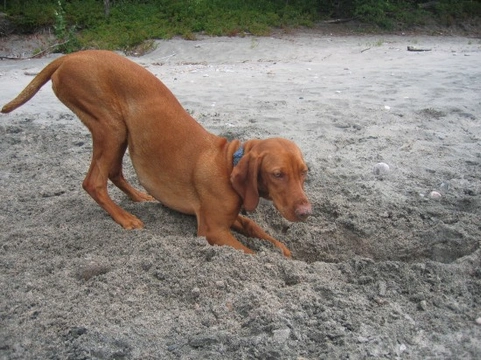
Why do dogs..? Part one
Dogs are often highly entertaining companions who can provide hours of pleasure to their owners, which enjoy observing their playful and often interesting behaviours. Dogs have a long and distinguished history as pets and companions to people, and a large amount of time and money has been spent on studying them and observing their natural behaviour patterns in order to gain a deeper insight into the way the dog’s mind works, and why they act and respond to situations in the ways that they do.
Compared to many other domestic pets, it is fair to say that we know more about the dog and the reasons behind the normal actions and reactions of the dog than we do that of other animals. Most dog owners, for instance, understand why their dogs might bark at strangers, react with fear to sudden loud noises, and get excited at the first indications that they might be going for a walk. However, various other common canine behaviours can be rather confusing to their human caregivers, and several questions crop up time and again regarding the reasons behind why dogs seem to carry out various rituals or act in what seems like an unusual manner in certain circumstances. With this in mind, read part one of our two-part guide that addresses some of the common questions that dog owners ask about their dog’s behaviour patterns.
Why do dogs bury their toys or treats?
While some dogs are avid diggers and buriers of their treasures and others seem to show little interest in burrowing about, most dogs will show at least some indications of trying to hide or bury the things that they value when they have finished playing with them or using them. When the domestic dog is well cared for and has all of their needs met, never have to wonder about where their next meal is coming from and do not have their toys confiscated as a matter of routine, this can be hard for the pet owner to understand!
Burying and resource hiding behaviour is due to the fact that the genetic memory of the dog harks back for thousands of years. When dogs were hunter-scavengers, there was much more uncertainty about where their next meal was coming from or if they would be able to protect their food or valued resources from other dogs and animals that might covet it. Burying food, treats or toys served to hide and protect their things from interlopers, and functioned as an emergency larder for the dog to return to, both securing their possessions from predators and preserving it from the effects of natural decay. Modern dogs have much more certainty and security over their possessions and the regularity of their feeding, but nevertheless will still often seek to hide and save food or toys that are additional to that which they need for the here and now. It is likely to be many thousands of years more before domestic dogs set this behaviour aside entirely, if they ever do!
Why do dogs dig at their beds and turn in circles before settling down?
You have provided a nice neat pile of blankets or quilts for your dog to sleep on and arranged it into what looks to you like the most welcoming and comfortable configuration. But then your dog immediately begins to dig it up, rearrange it and make a mess of it, often leaving it in a heaped pile and sleeping on the side of it in what looks to you like an awkward or uncomfortable position! Even then, your dog may not be satisfied, and will turn in circles, lie down and get up again, push the bed around some more, and turn around again before finally settling down to rest. Why is this?
It is understandable that upon going to bed, your dog will want to get comfy and sleep in the way that makes him happy, but there is more to it than that. If you imagine your dog in a wild setting, this kind of behaviour makes much more sense. Your dog is essentially finding the most comfortable patch of warm ground to sleep on, flattening down the grass, working out what direction to face in order to avoid leaving their backs exposed to any predators or approaches, and trying to ensure that they will be able to sleep both comfortably and safely. Placing your dog’s bed in a corner or against a wall can provide some extra security for them in this respect.
Why do dogs shake themselves off vigorously when they are not wet?
Dogs will often come to a dead halt and shake themselves off for no obvious reason, sometimes when out for a walk, or when they have just woken up. Obviously this is understandable when your dog is wet and trying to remove water from his coat, but what about when he is bone dry? There could be a variety of factors at play here. When your dog has just woken up, he will usually yawn, stretch and shake himself off as part of the process of waking himself up and getting ready to face the day. Another theory to bear in mind is that dogs, like all mammals, dream, and for all we know, in his dream your dog was swimming in a pond or had just got caught in the rain and carried this memory over with him when he woke up!
When your dog is out walking or at any other time of the day, he may simply shake himself off to clear his head, work his muscles out or relieve an itch. This is perfectly normal, but if your dog appears to be shaking himself out a lot or twitching his skin or muscles multiple times a day, it may well be worth having your vet check him over for any skin irritations or parasites, or the presence of an underlying health condition.



